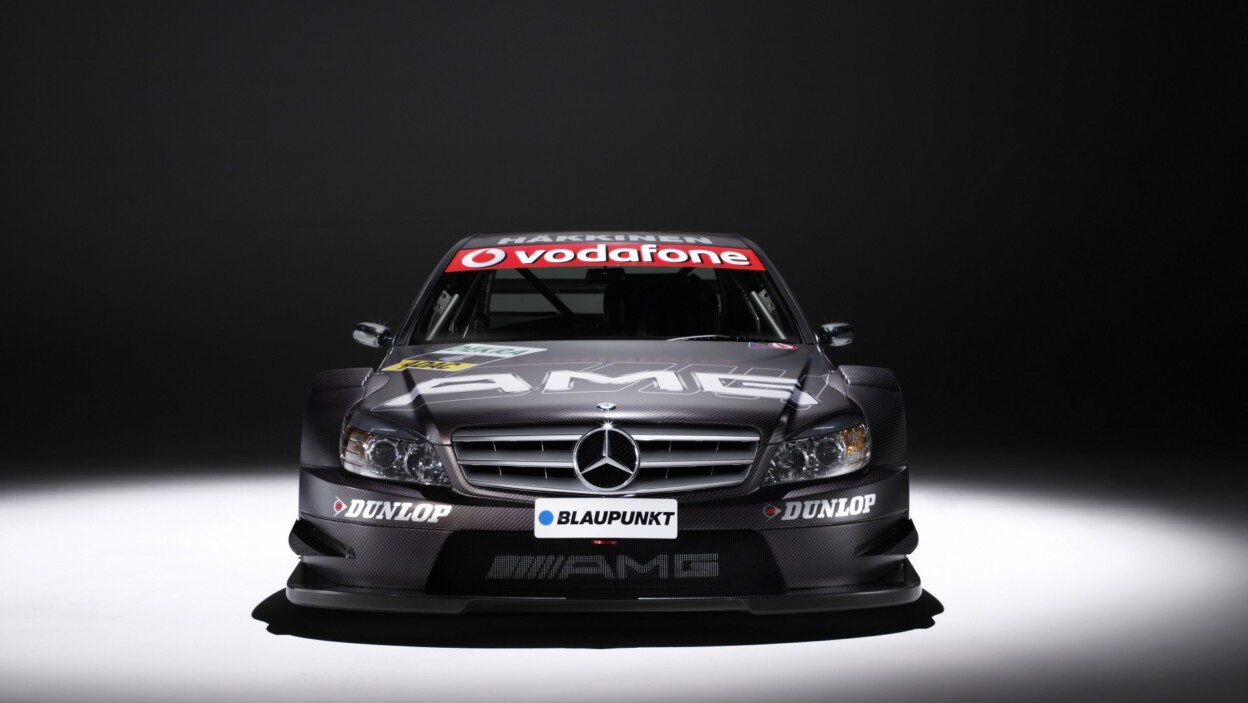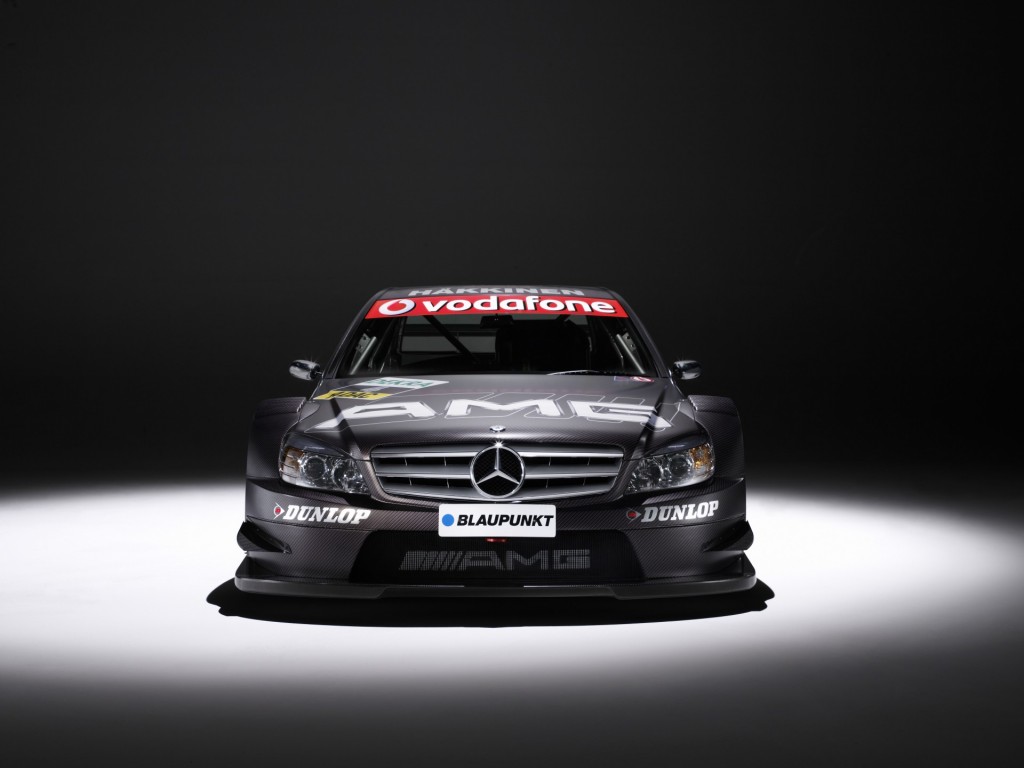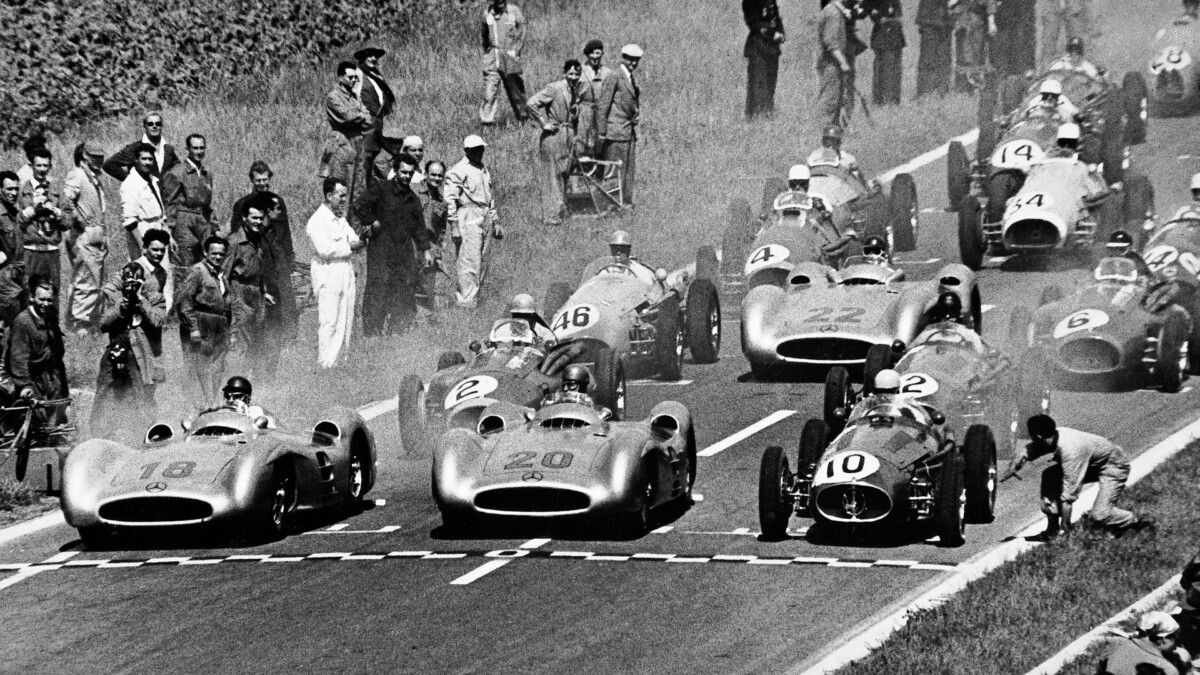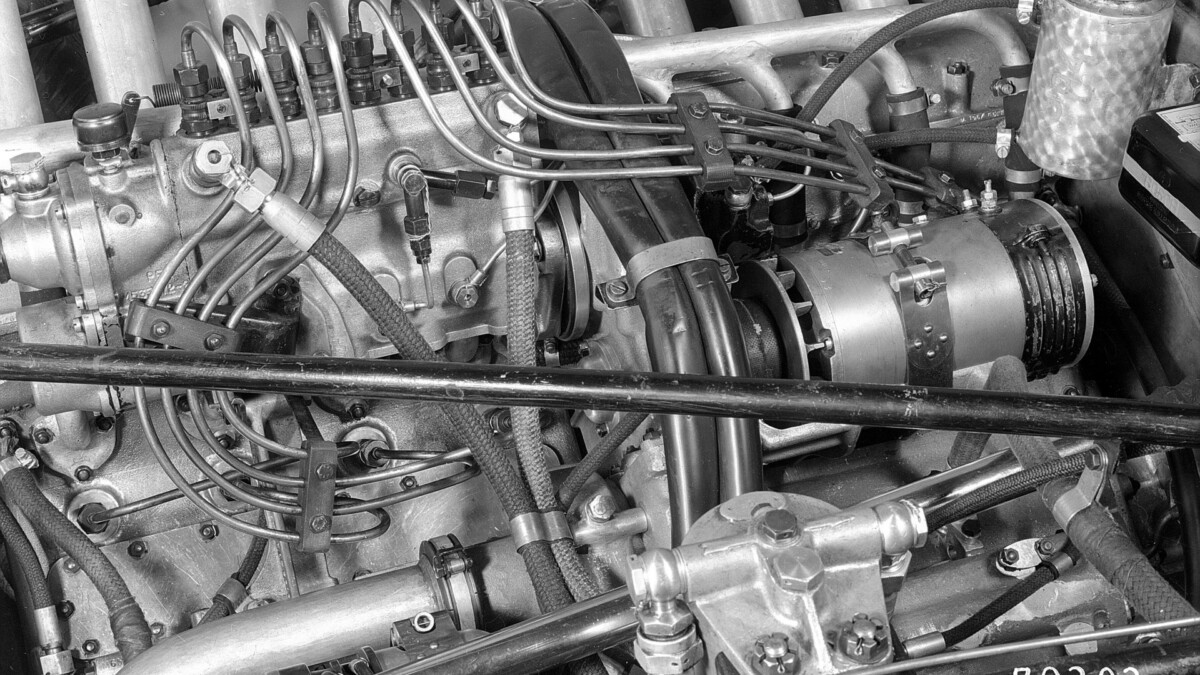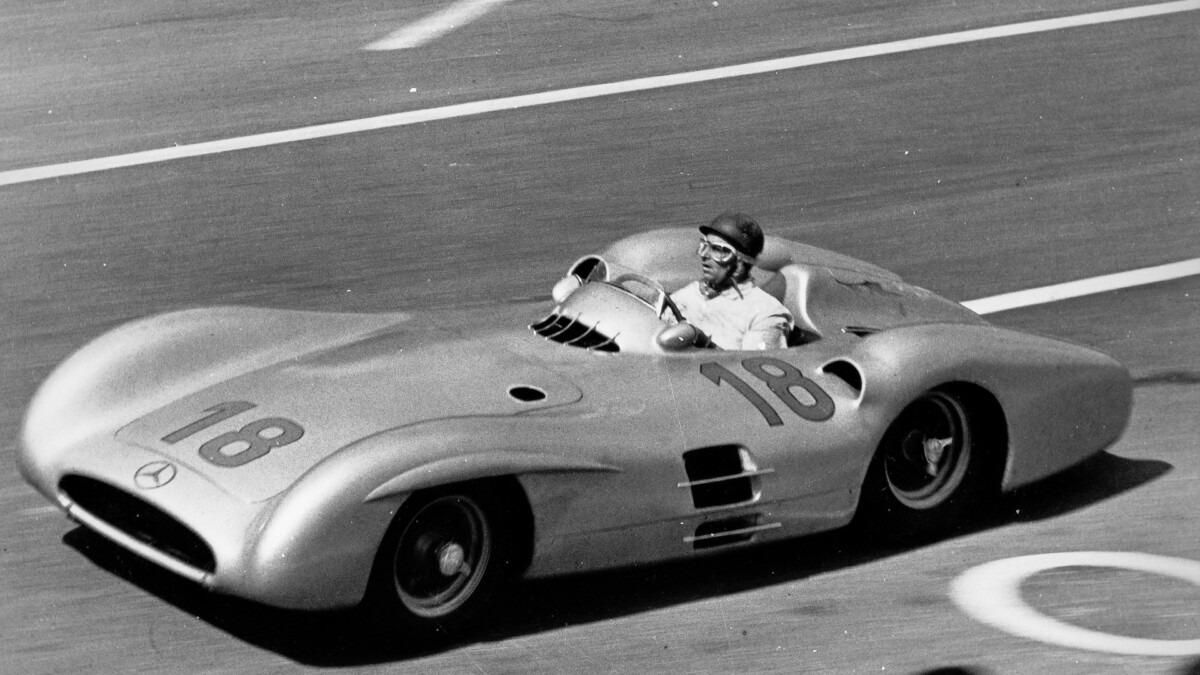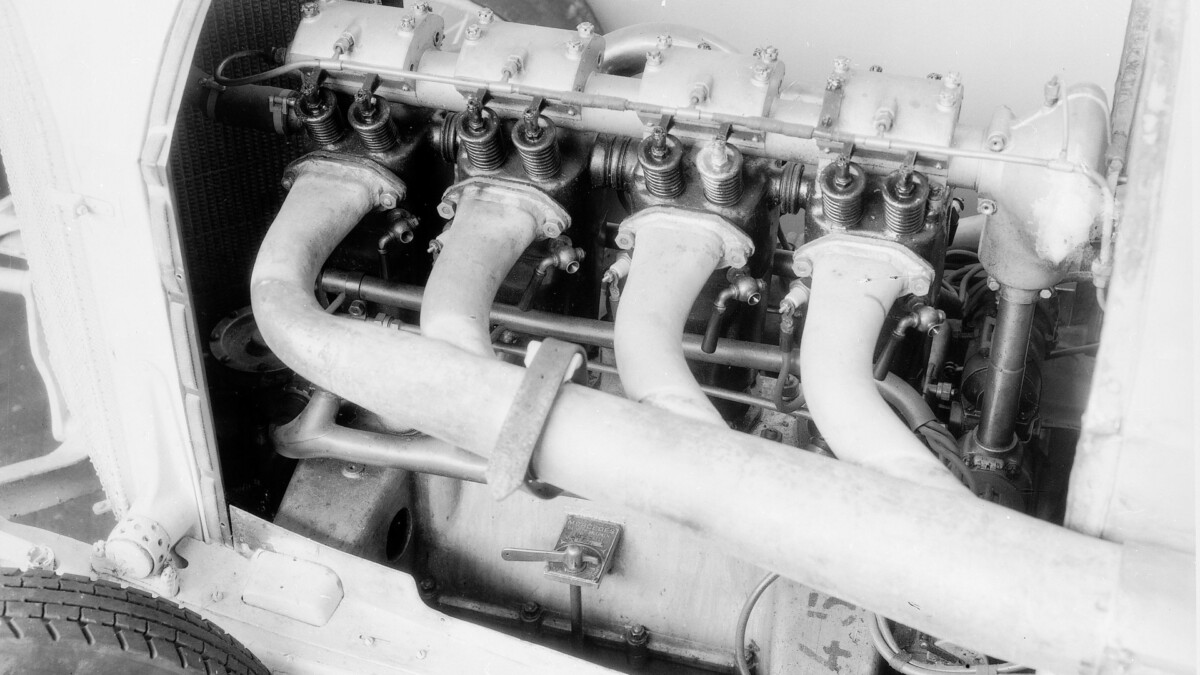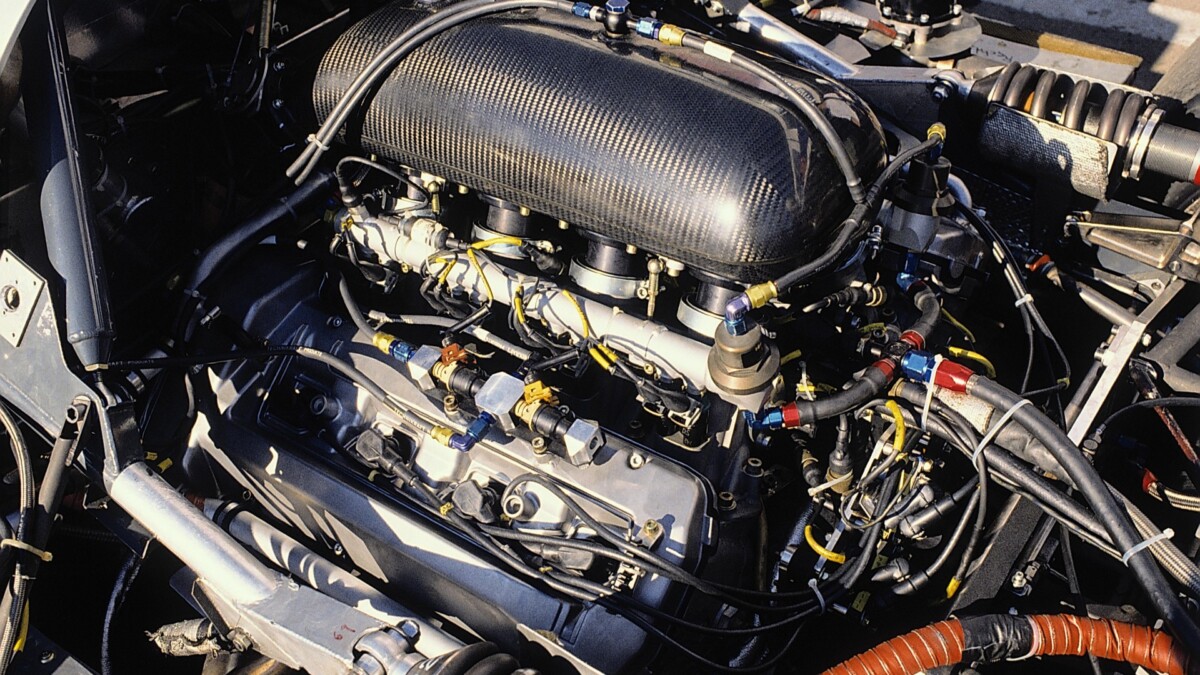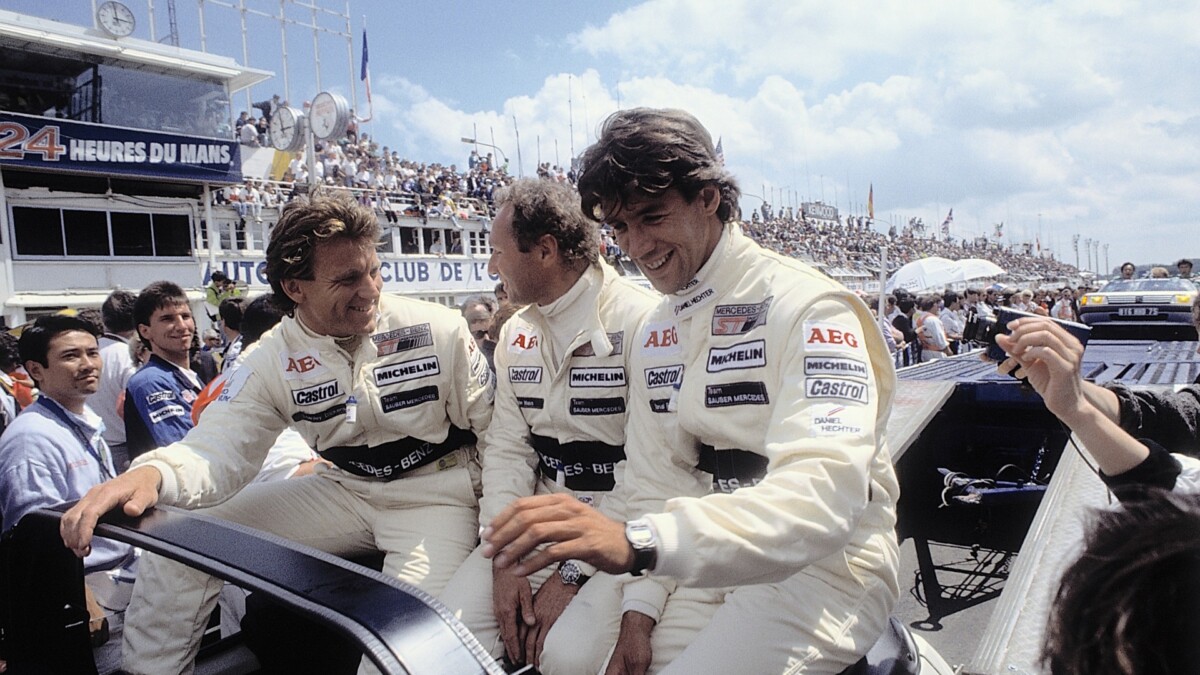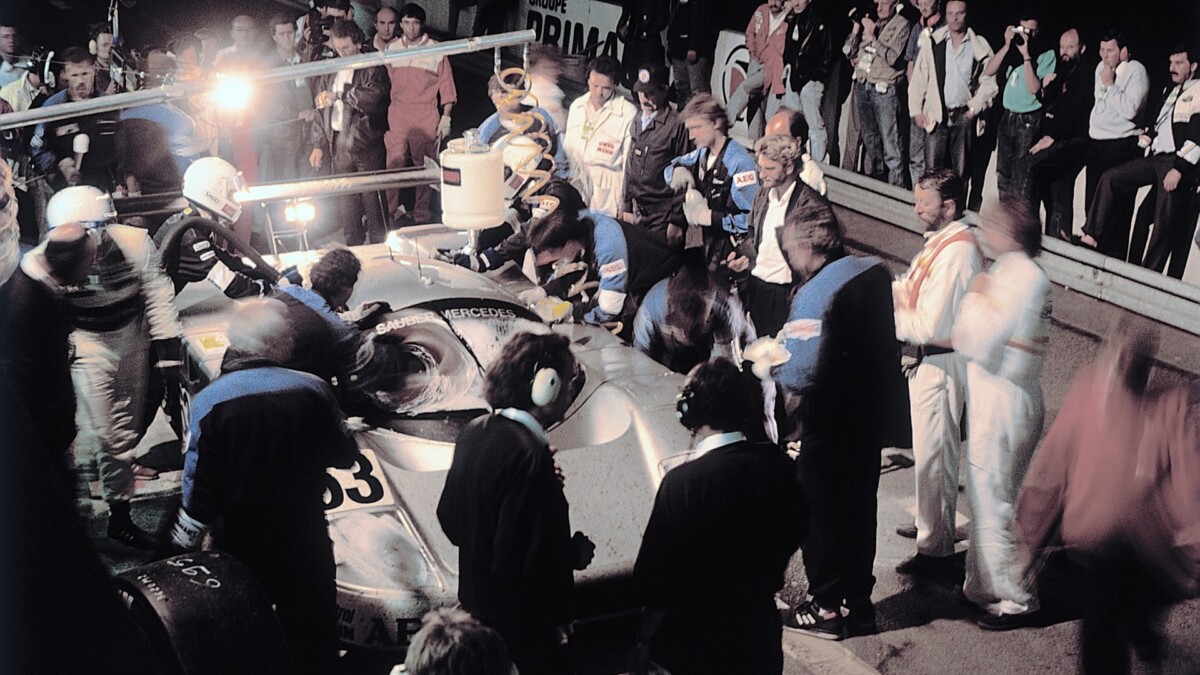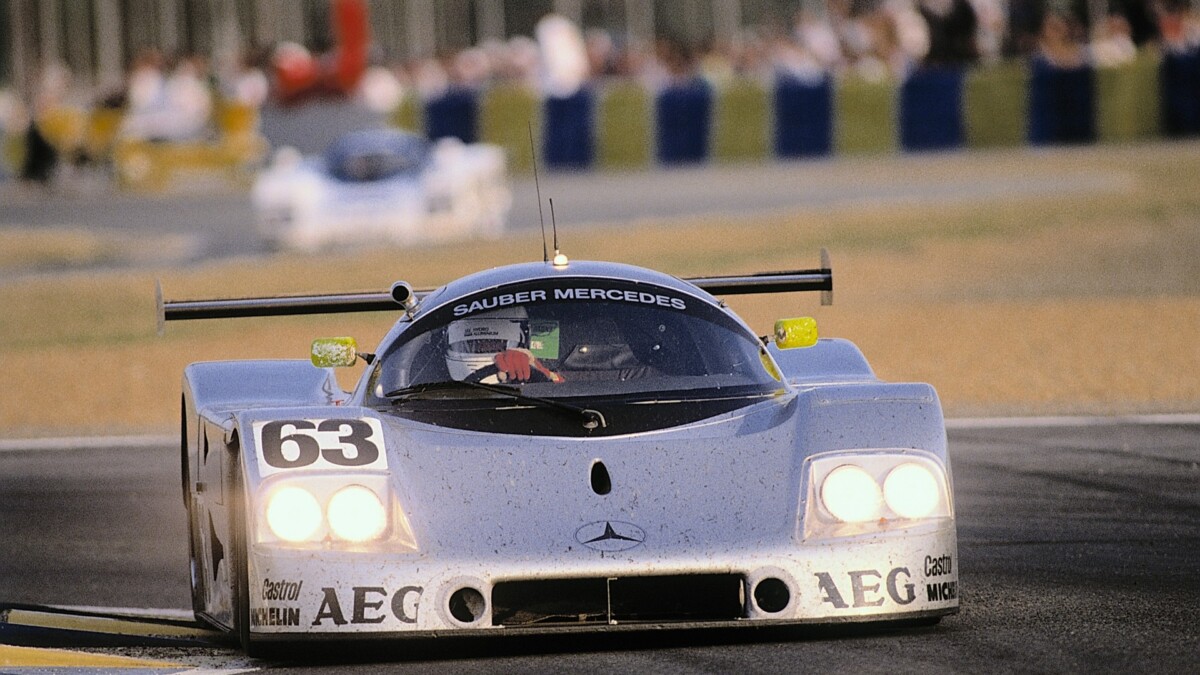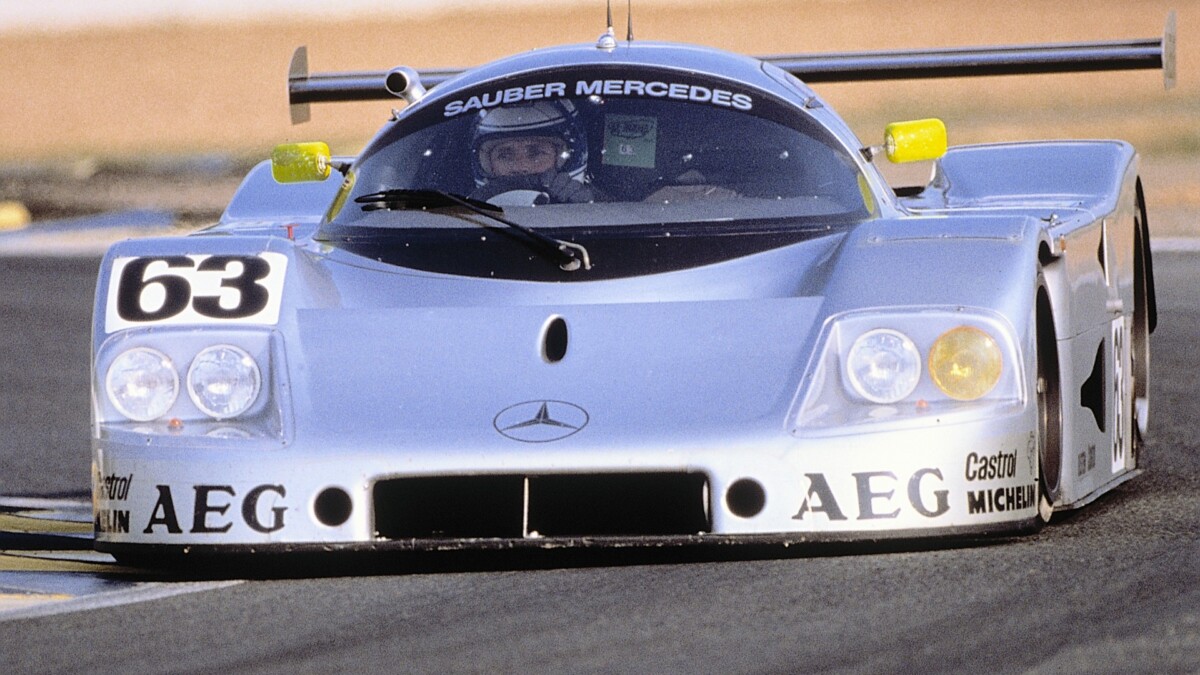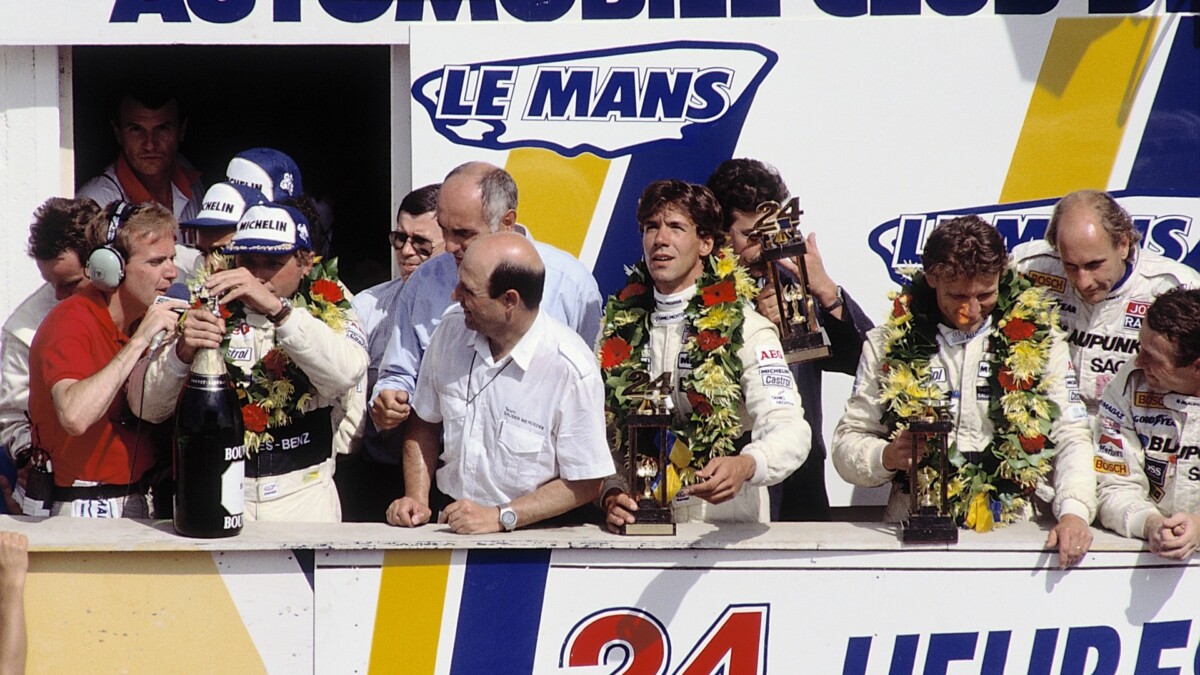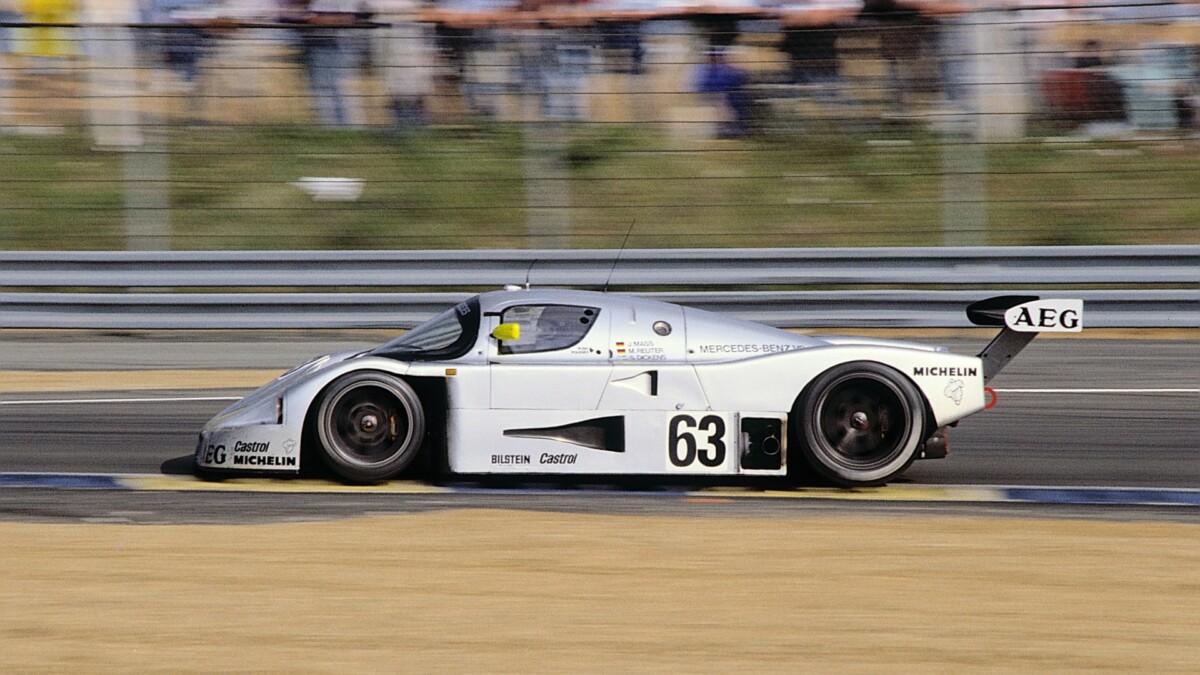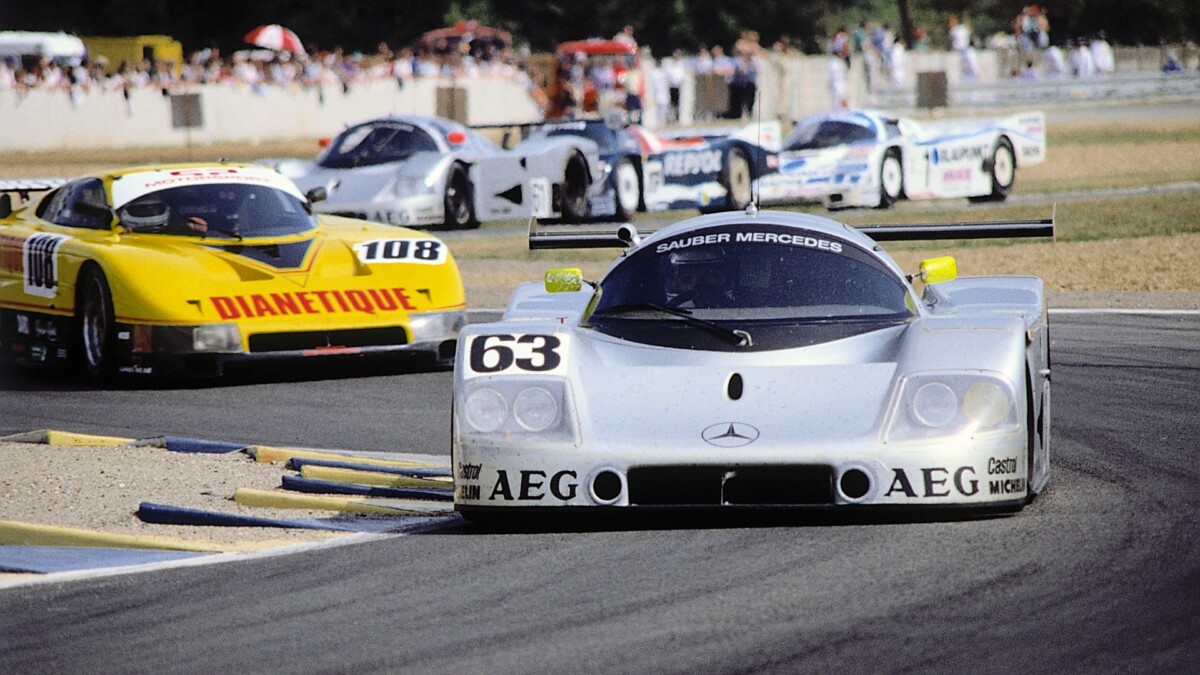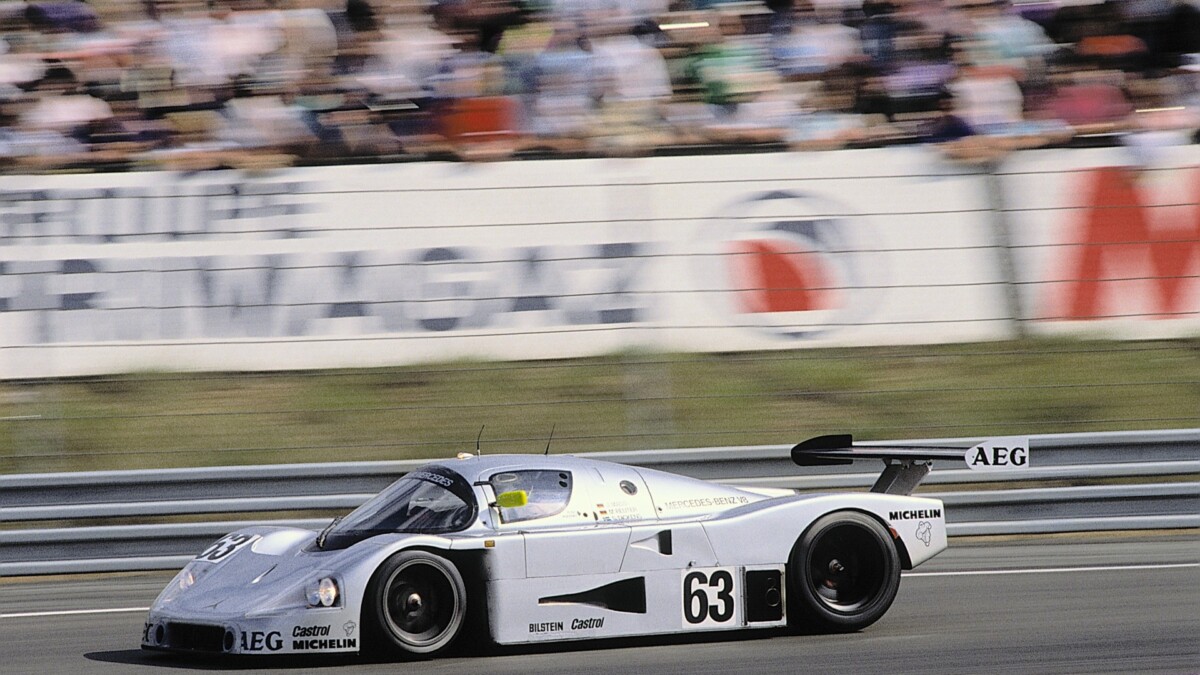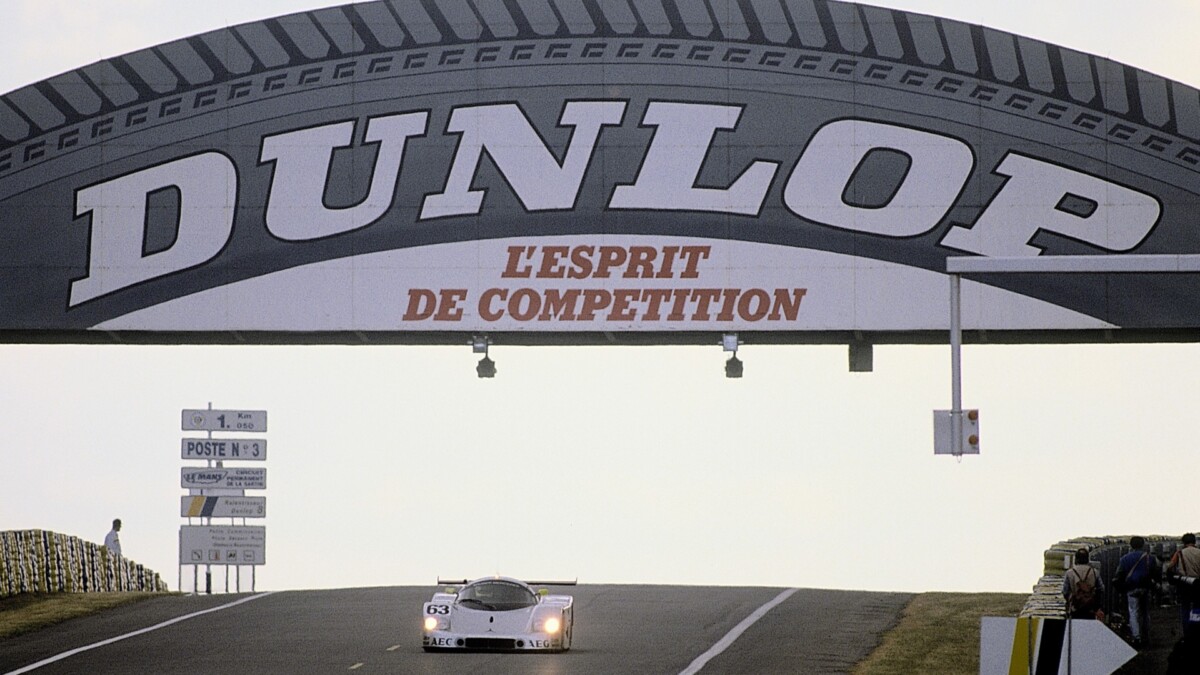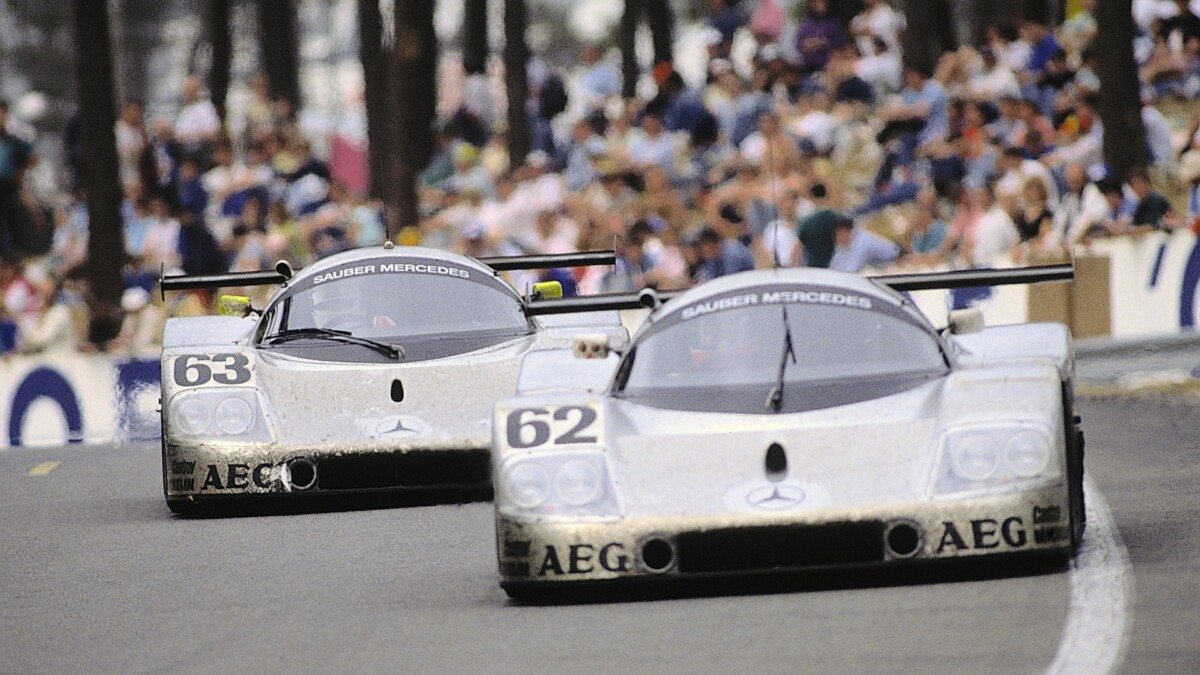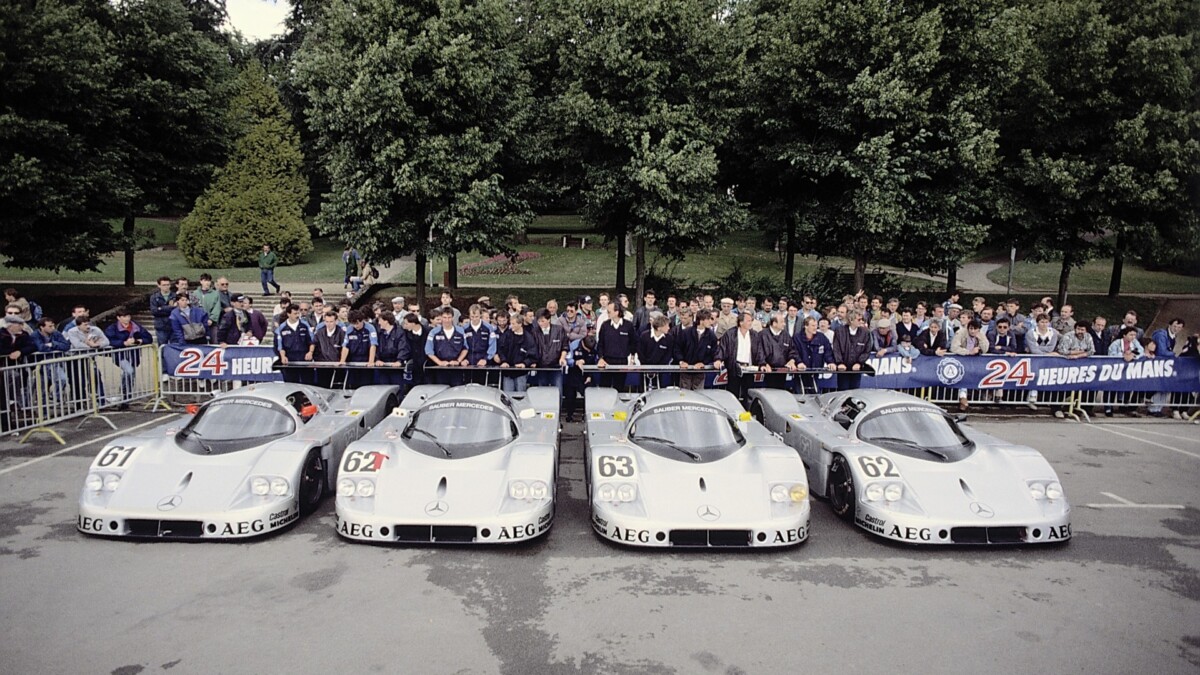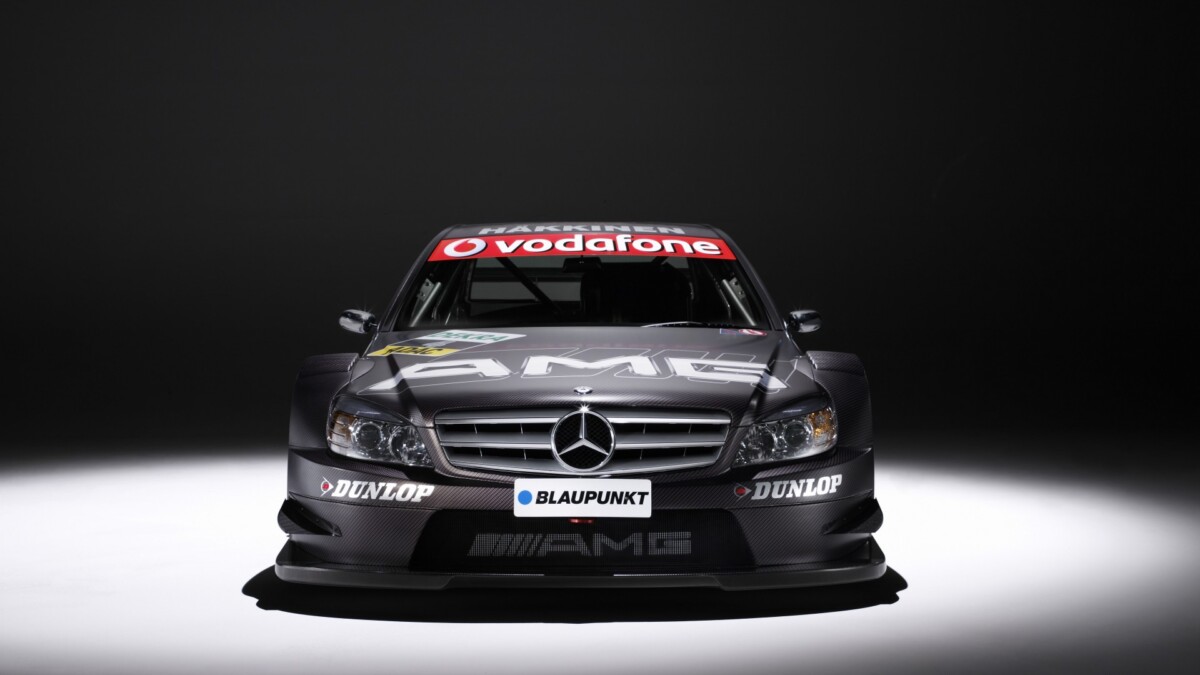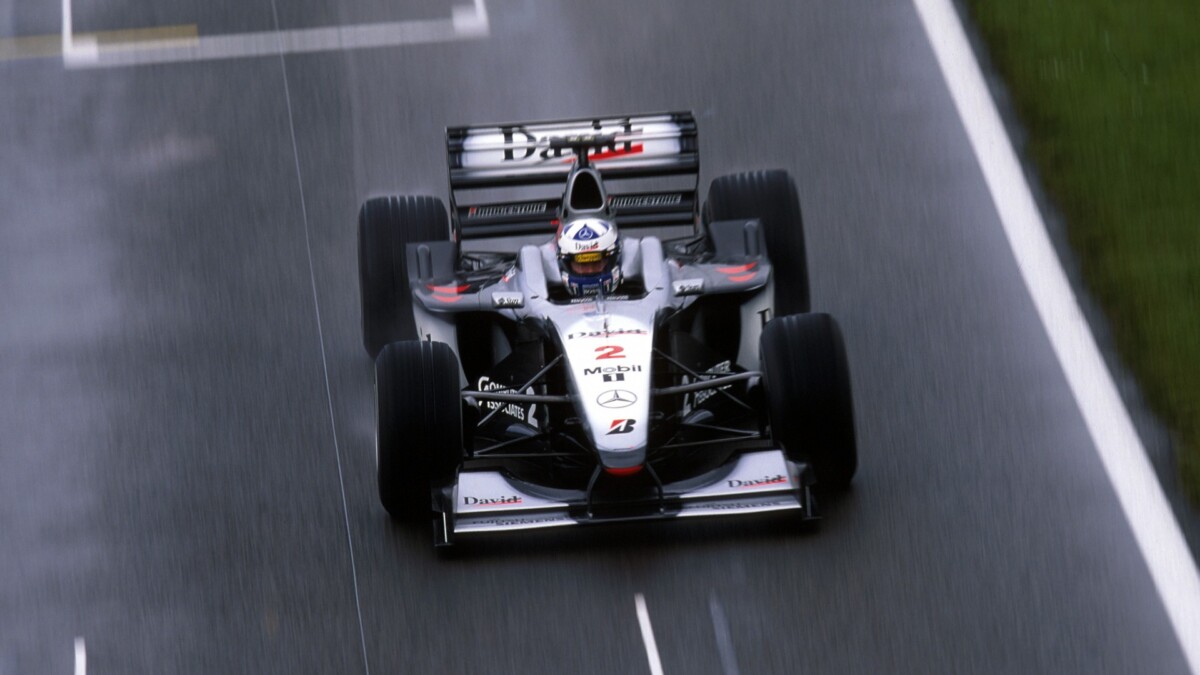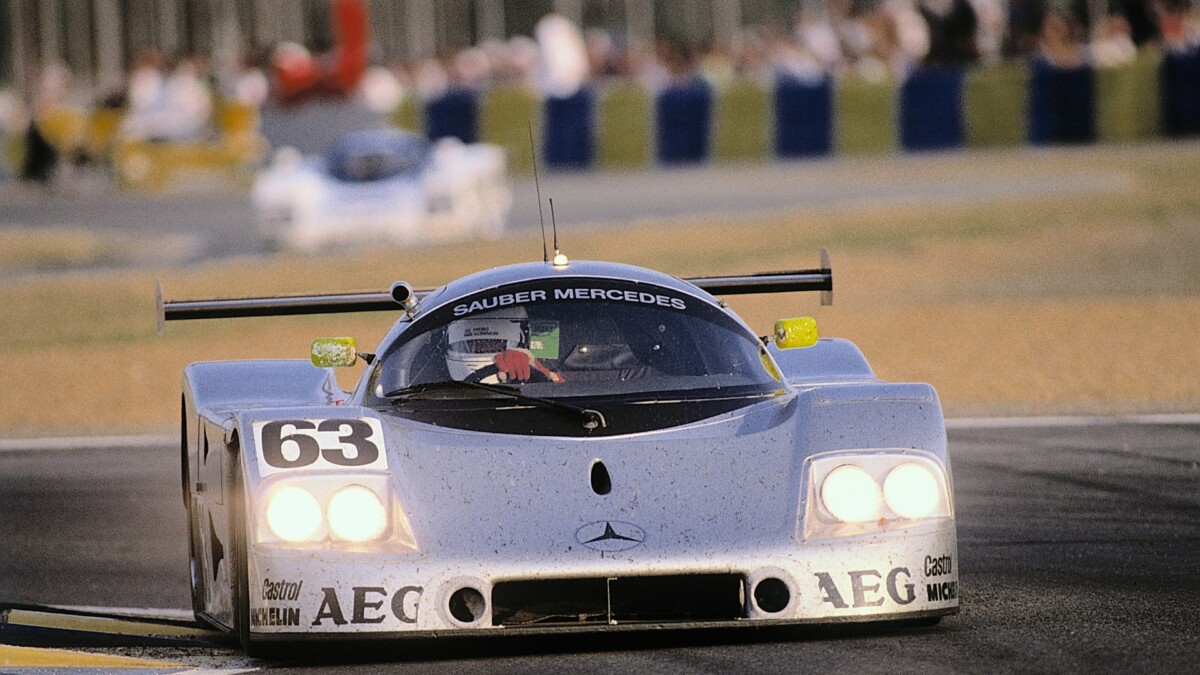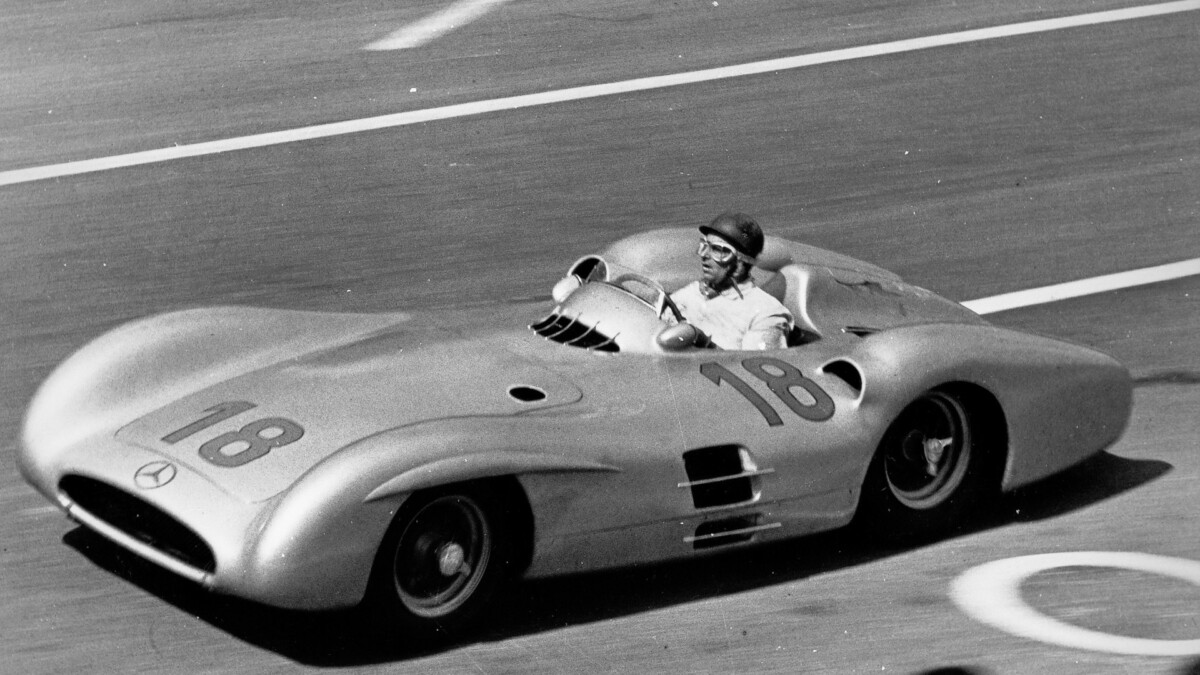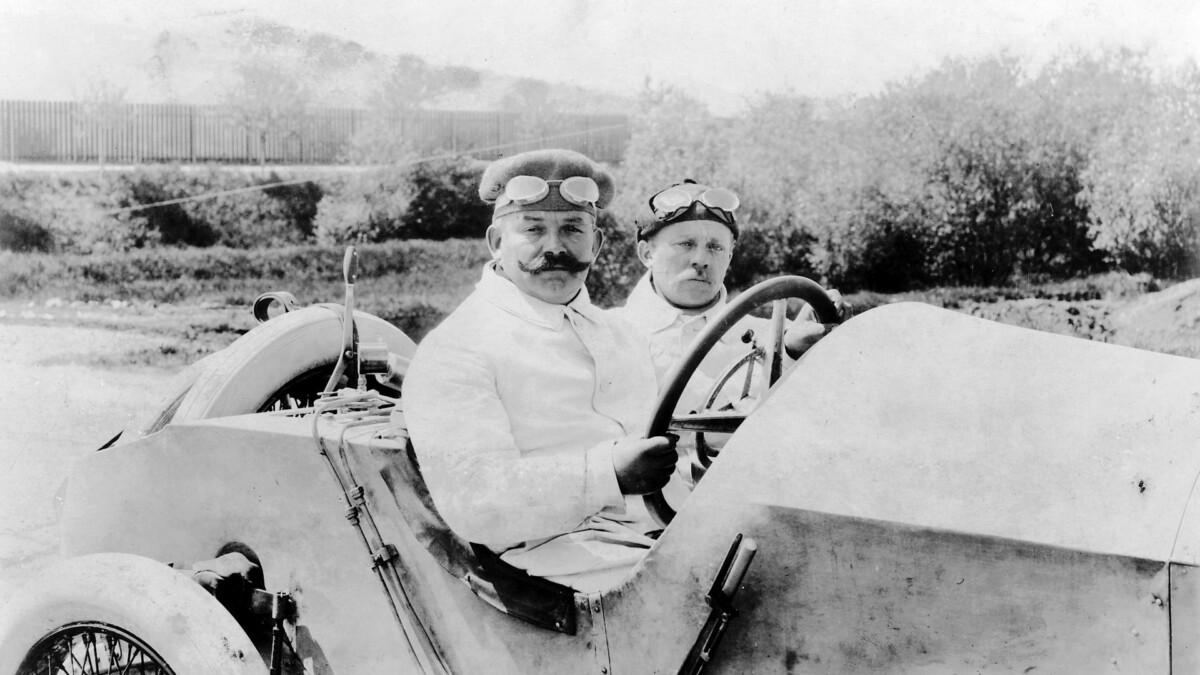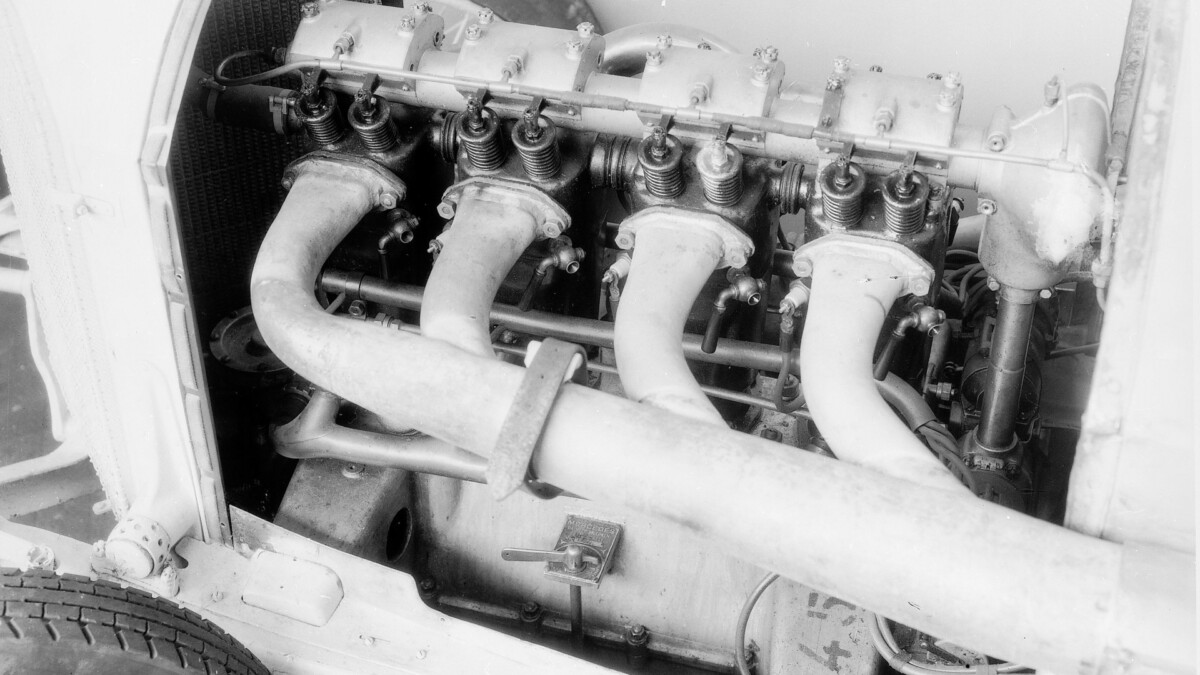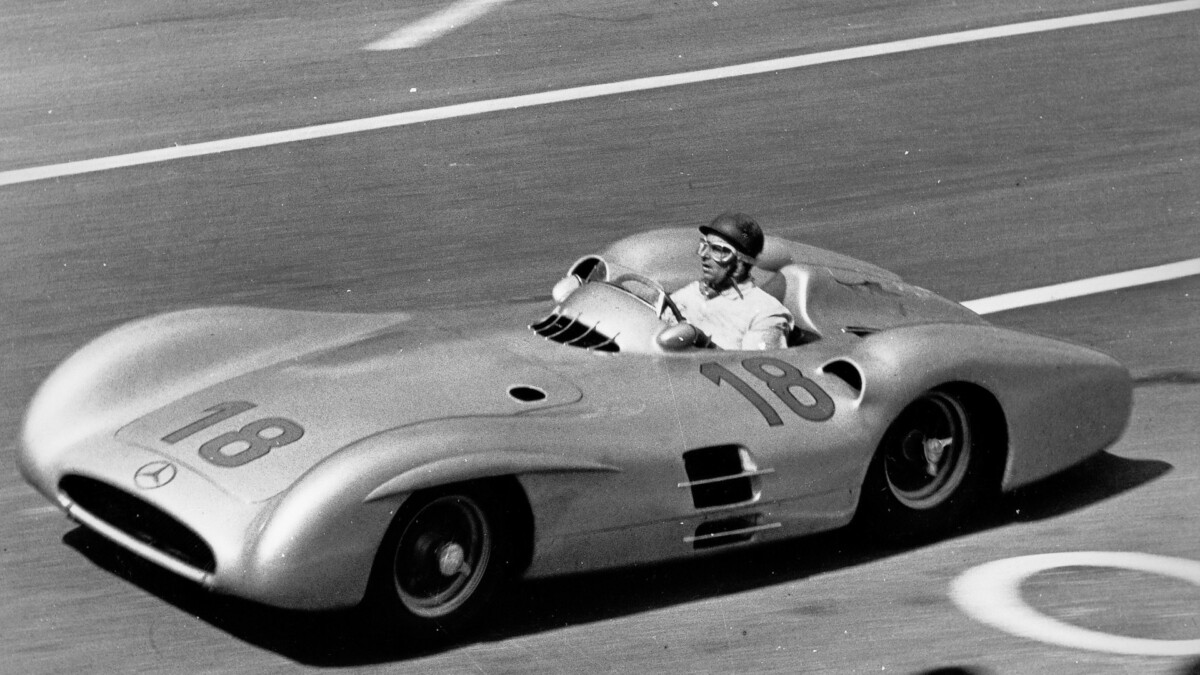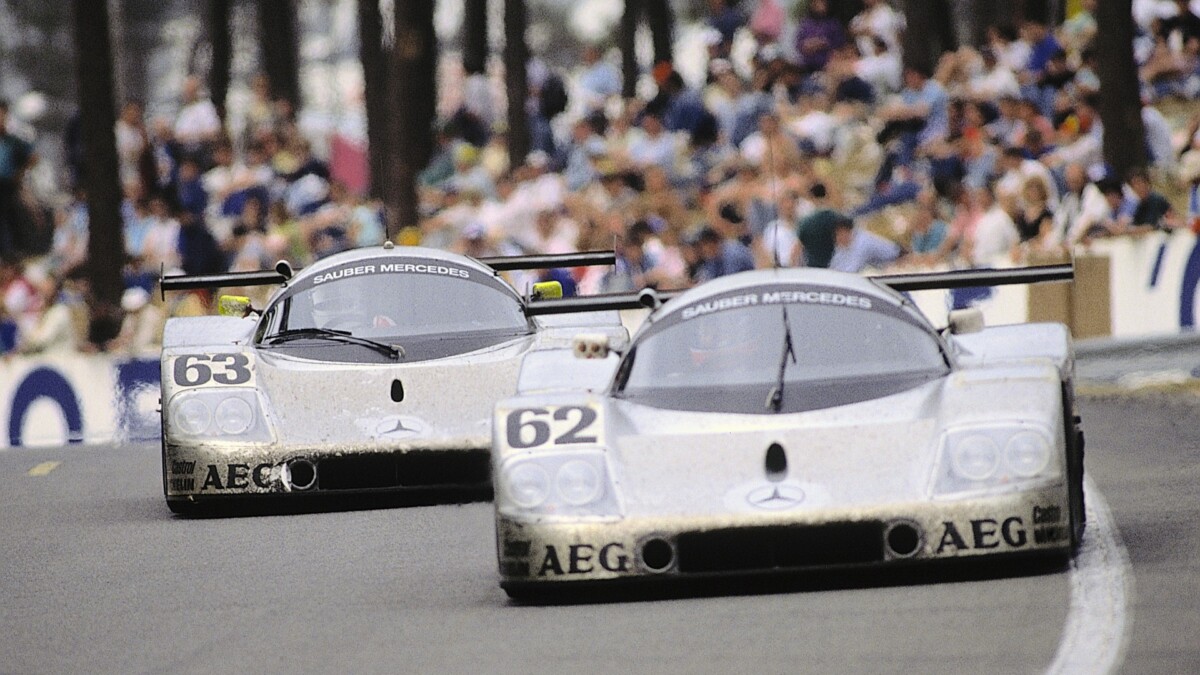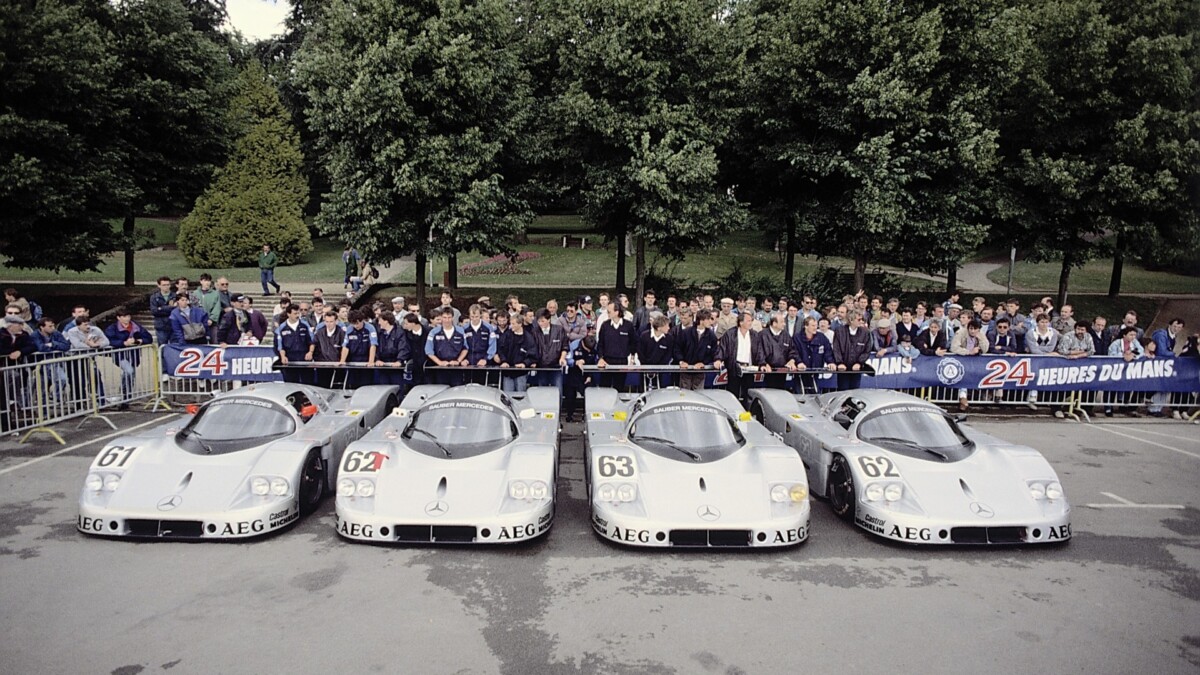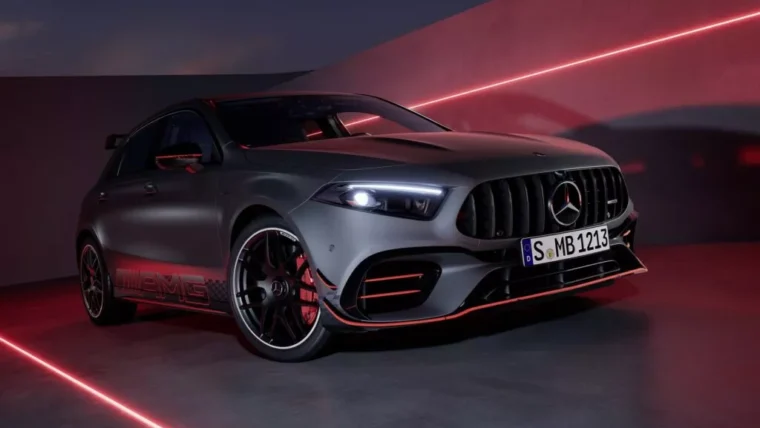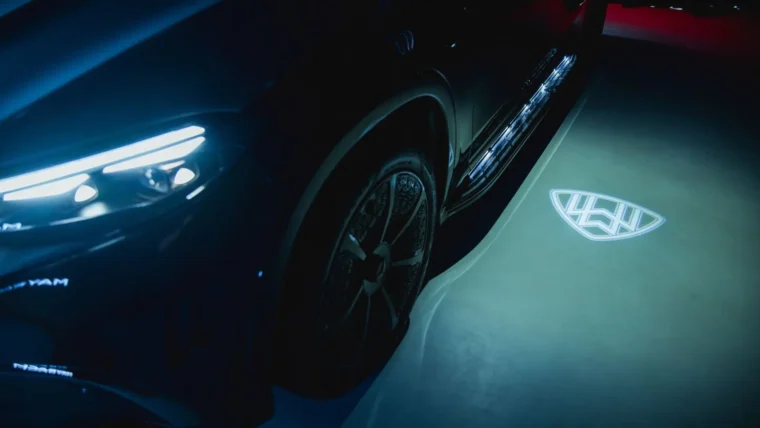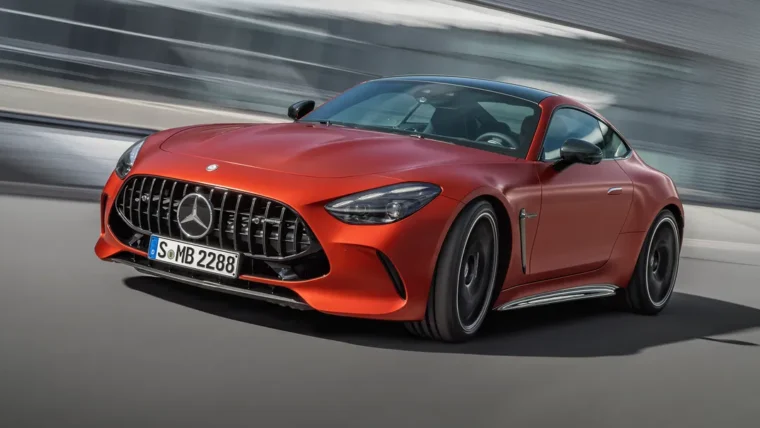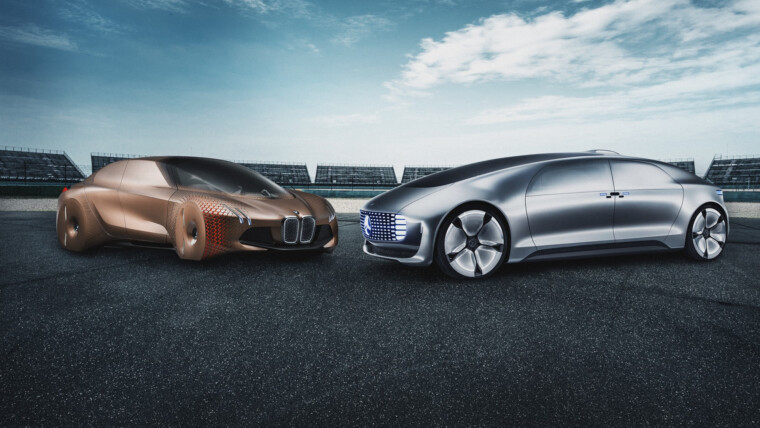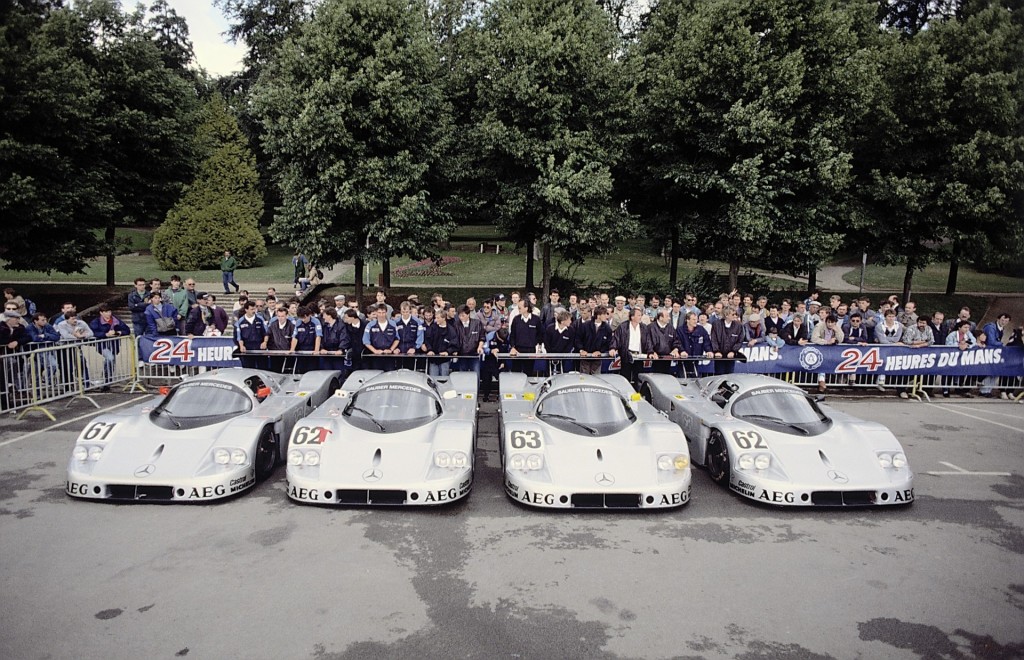
Over the course of 2014, Mercedes-Benz Classic will be celebrating “120 years of motor sport”. Activities will begin at the brand’s stand at the Rétromobile specialist exhibition in Paris (5 to 9 February 2014), designed and implemented in close collaboration with Mercedes-Benz France. The focus here will be on the historic motor sport successes achieved by Mercedes-Benz in France. “Many of the most exciting motor racing stories associated with the three-pointed star and its predecessor brands took place on French soil,” according to Michael Bock, Head of Mercedes-Benz Classic. “Among the highlights, without doubt, are the very first automotive race ever to take place, the Grand Prix victories of 1908, 1914 and 1954, wins in the 24 Hours of Le Mans and a whole series of more recent successes.”
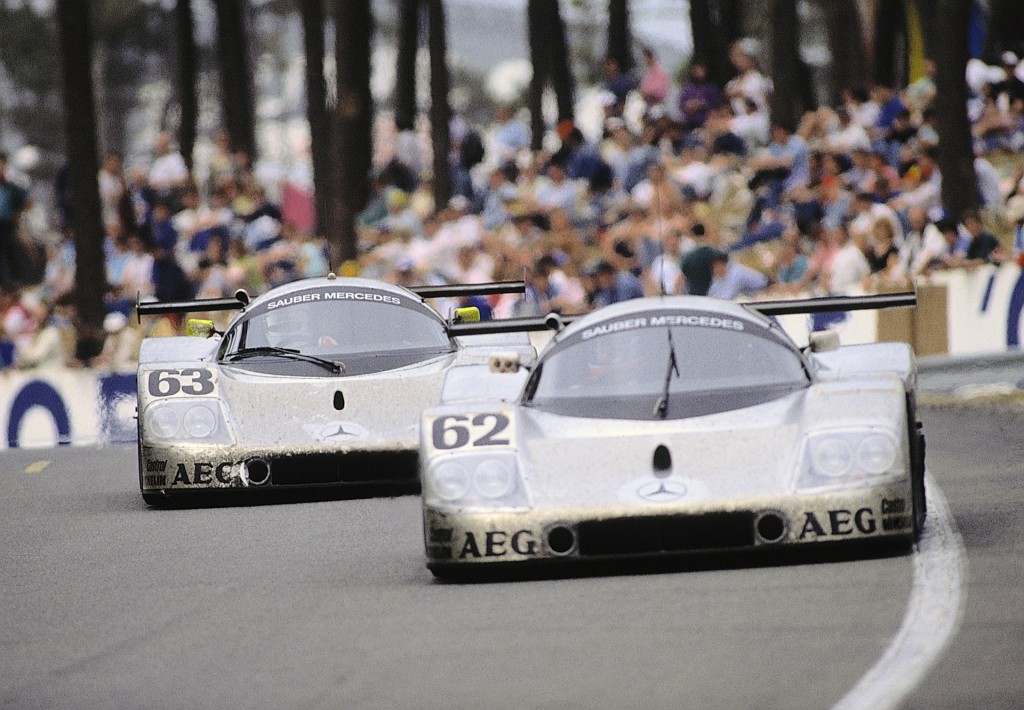
Mercedes-Benz Classic will reference the topic of “120 years of motor sport” at various points throughout the year, making it the key theme of its participation in a selected programme of events in the international classic vehicle calendar. The company will also initiate events of its own to mark a few extra-special highlights.
Since its invention in 1886, the automobile’s performance potential and reliability have been put to the test time and time again: right from the very early days, Daimler and Benz vehicles were taking part in all notable events in Europe as well as in other countries around the world. They won races and repeatedly set new speed records in record-breaking runs. Motor sport was born some 120 years ago in France – and the success of the winning vehicles was all down to their two-cylinder “Système Daimler” engines. These first moments of glory were followed by numerous other motor racing events that were to prove significant in the success story of the Mercedes-Benz brand. A look back over the company’s involvement in motor sport makes clear the extent to which this became the driving force behind the rapid developments made in motor vehicle technology.
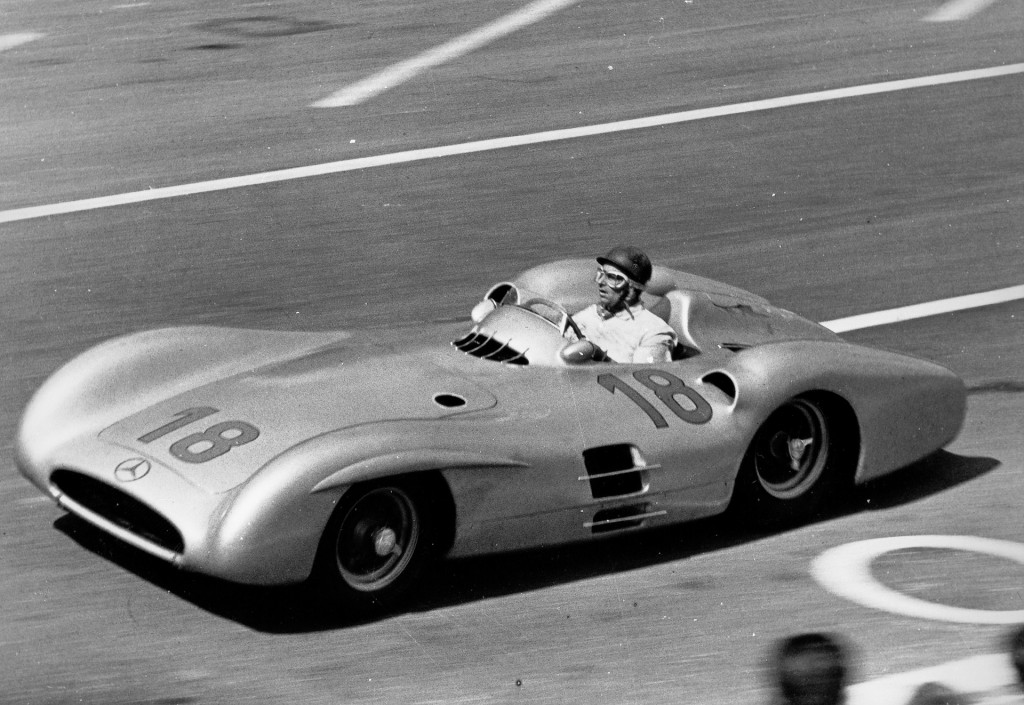
The Mercedes-Benz Classic stand at Rétromobile 2014 (Hall 1, K64) will focus on the brand’s motor racing successes in France, with a display of historically important exhibits commemorating 120 years of motor sport history:
- Daimler two-cylinder V-engine, 1894. The “Moteur système Daimler” built under licence in France, propelled cars from Peugeot and Panhard & Levassor to victory in the Paris–Rouen and Paris–Bordeaux–Paris motor races.
- Mercedes Grand Prix racing car, 1914. In the French Grand Prix in Lyon, the Daimler-Motoren-Gesellschaft (Daimler Motor Company) achieved the first one-two-three victory in the history of motor sport with vehicles of this model.
- Mercedes-Benz W 196 R “Streamliner”, 1954. The Silver Arrows marked their comeback after the Second World War in dramatic style: with a double victory in the French Grand Prix in Reims.
- Sauber-Mercedes C 9, 1989. This Silver Arrow won the prestigious 24-Hour race of Le Mans.
- McLaren Mercedes MP4-15, 2000. The vehicle in which David Coulthard won the French Grand Prix at Magny-Cours.
- Mercedes-Benz DTM C-Class, 2009. Gary Paffett’s winning vehicle in the DTM race at Dijon-Premois.
Rétromobile 2014: the Mercedes-Benz Classic exhibits
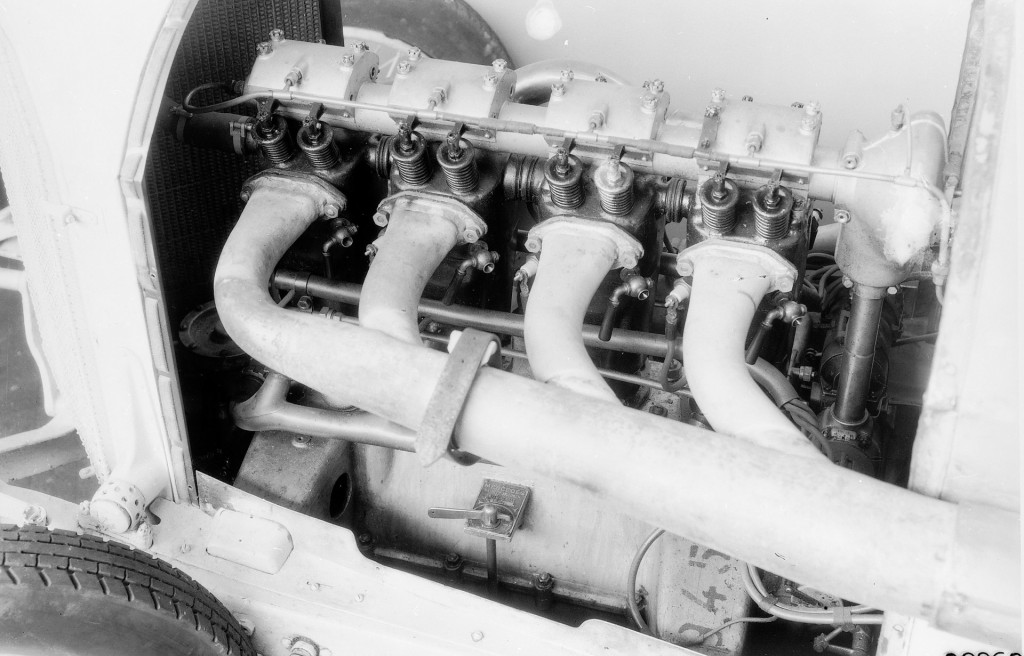
Daimler two-cylinder V-engine, 1894
The automobile powered by a combustion engine was just eight years old on 22 July 1894 when it took part in the first public race, a 126-kilometre reliability run for “horseless carriages”, between the French cities of Paris and Rouen. The selection process ahead of the race was tough: of 102 vehicles that applied for a place in the starting line-up, only 21 were admitted. Of these, 17 would go on to reach the finishing line, 9 of them powered by a Daimler engine built under licence, including the winning vehicles. The 2.6 kW (3.5 hp) engines, built according to original designs by Gottlieb Daimler, gave the cars an average speed of up to 20.5 km/h. First place in this first-ever motor sport event was shared by a vehicle built by Panhard-Levassor and one by the Peugeot brothers, both of them powered by a “Moteur système Daimler”. The day was a great cause for celebration for Gottlieb Daimler, for incontrovertible proof had been provided to the general public, and to the world of European motor racing, that his universally applicable, high-speed petrol engine was the one to have prevailed in the highly competitive field of automotive propulsion systems.
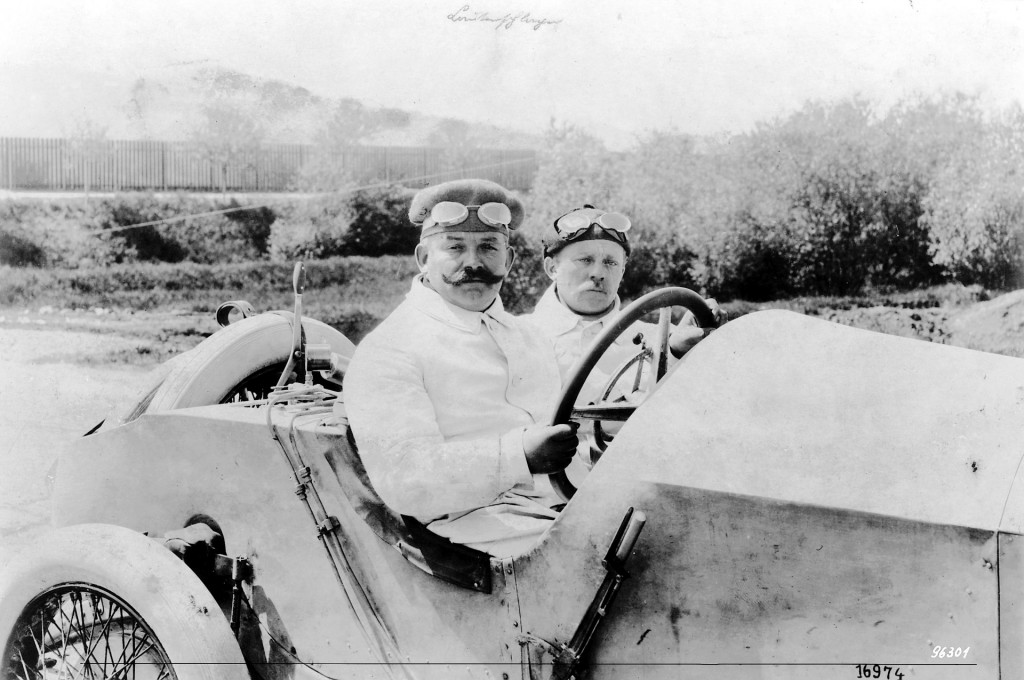
Mercedes Grand Prix racing car, 1914
On 4 July 1914, Mercedes celebrated a triumphant one-two-three victory in the French Grand Prix by Christian Lautenschlager, Louis Wagner, and Otto Salzer. The race was held over a 37.6-kilometre circuit south of Lyon. The vehicle entered by the Daimler-Motoren-Gesellschaft was its newly developed Grand Prix racing car. Some 20 laps over the tricky course, or a good 750 kilometres, were the order of the day, and Mercedes was up against apparently almost unassailable competition – above all from Peugeot and Delage from France, Sunbeam from England, and Fiat from Italy. Theodor Pilette and Max Sailer were forced to retire with technical problems, but Christian Lautenschlager, Louis Wagner, and Otto Salzer took the remaining cars on to finish the race at the front of the field after more than seven hours: the first one-two-three victory in the history of motor sport had been achieved.
The regulations limited engine displacement to 4.5 litres. The Mercedes Grand Prix racing car featured a completely redesigned four-cylinder engine with an overhead camshaft and two intake and two exhaust valves per cylinder – making this the first Mercedes engine to make use of four-valve technology. The racing engine delivered a peak output of 78 kW(106 hp) at a – quite literally – revolutionary 3,100 rpm.
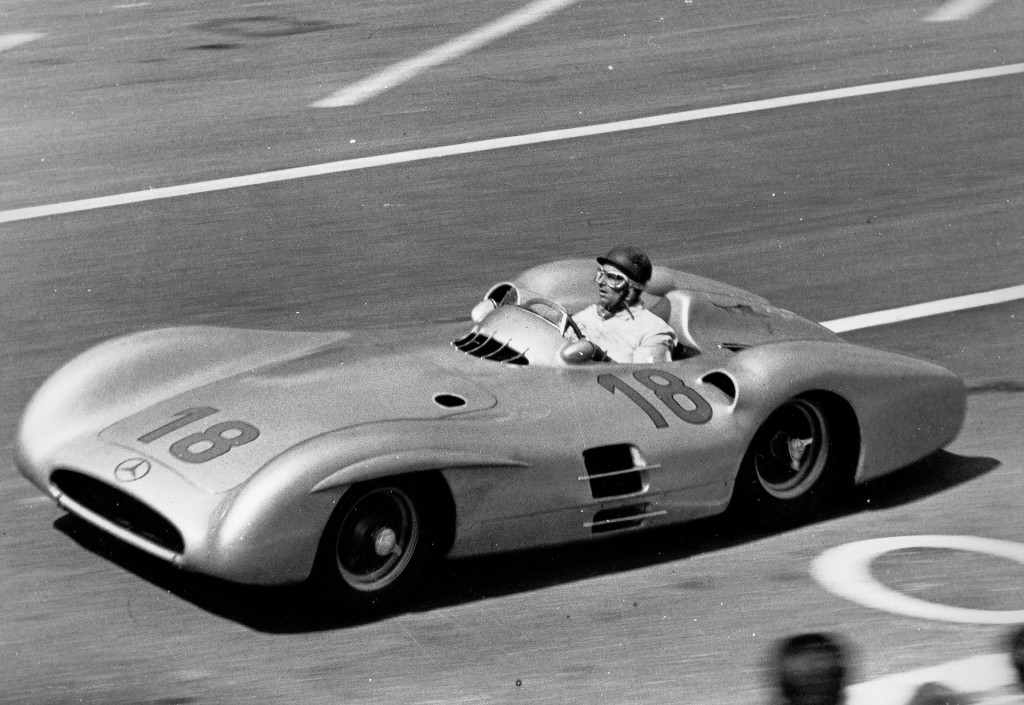
Mercedes-Benz W 196 R “Streamliner”, 1954
The W 196 R racing car, which appeared initially with a futuristic-looking streamlined body, featured a naturally aspirated engine with a displacement of 2497 cc and desmodromic (positively closing) valve control. At the beginning of the season, it delivered a peak output of 188 kW (256 hp), with a top speed at this initial stage of around 275 km/h. The new “Streamliner” lined up for its first start at the French Grand Prix in Reims. Even in training the W 196 R vehicles with their fully enclosed bodywork achieved the fastest times; in their racing debut on 4 July in Reims they surpassed all the expectations of both the public and their competitors. Indeed, newly appointed Argentinian driver Juan Manuel Fangio, the World Champion of 1951, and Karl Kling delivered a triumphant double victory. This sensational success is also historically significant in that it is now exactly 40 years since Lautenschlager/Wagner/Salzer drove to triple victory in Lyon.
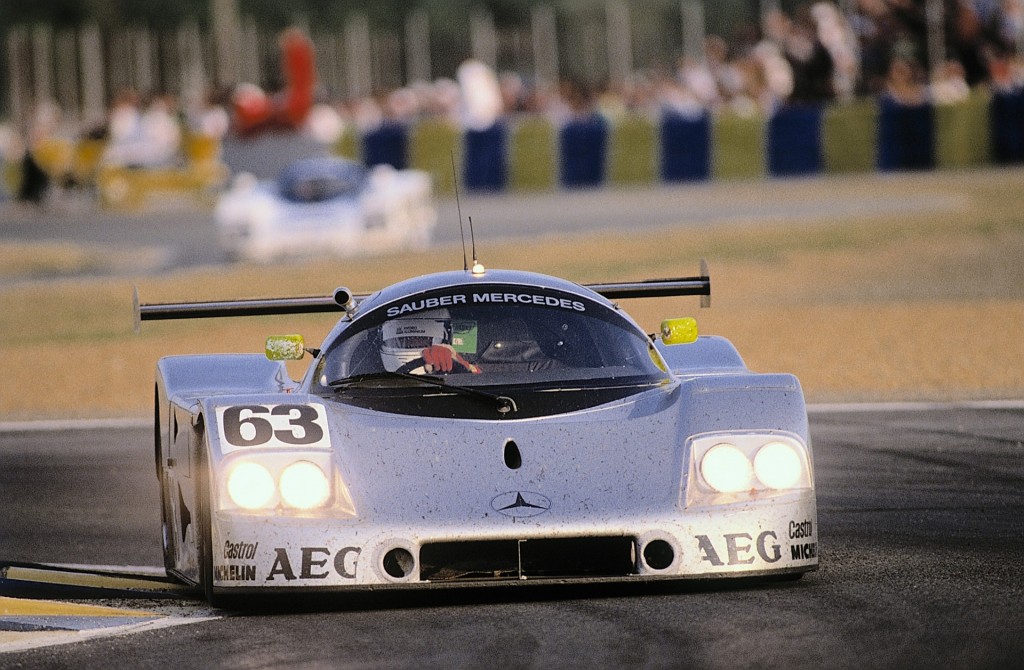
Sauber-Mercedes C9, 1989
The late 1980s and 1990s marked the return of Mercedes-Benz to the race track: the first vehicles to sport the three-pointed star were Group C racing sports cars. The 530 kW(720 hp) Sauber-Mercedes used since 1987 also underwent some visual modifications for the 1989 season: the hitherto virtually all-black livery gave way to a silver paint finish, identifying the cars unmistakeably as Mercedes-Benz Silver Arrows. Between 1989 and 1990, the new racing cars brought home 16 victories from a total of 18 races. These included the 24 Hours of Le Mans, which took place on 10 and 11 June 1989, in which the Mercedes-Benz drivers Jochen Mass/Manuel Reuter/Stanley Dickens and Mauro Baldi/Kenny Acheson/Gianfranco Brancatelli secured a double victory with Silver Arrows in their C9 guise – 37 years after that outstanding win with the first Silver Arrow of the post-war period: the Mercedes-Benz 300 SL racing sports car (W 194).
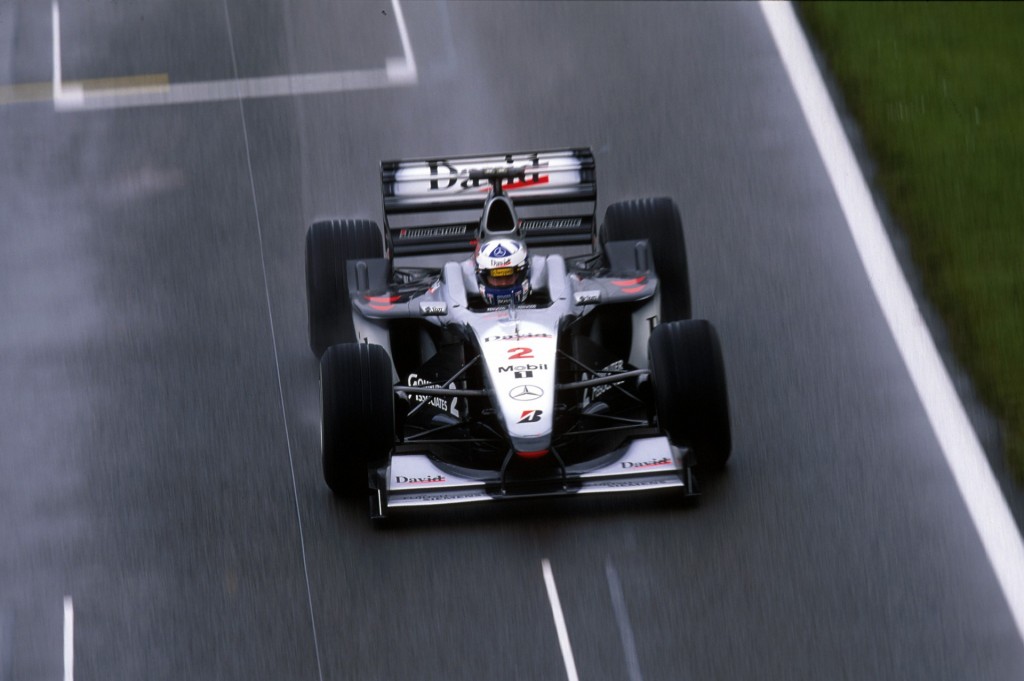
McLaren-Mercedes MP4-15, 2000
In the 2000 race season, Mika Häkkinen and David Coulthard became runners-up in the constructors’ championship in the McLaren-Mercedes MP4-15, while Häkkinen took second place in the drivers’ championship behind Michael Schumacher in a Ferrari, and Coulthard third. The McLaren-Mercedes MP4-15 differed visually as well as technically from its predecessors: it had a flatter nose section, additional head protection to either side of the cockpit and an engine that was shorter by 2 centimetres, the three-litre FO 110J V10-engine with an output of 600 kW (816 hp). The powertrain, a completely new design, took into account the findings of development work undertaken over the course of the previous season. Compared with the previous version the new engine was more compact and lighter in weight, yet at the same time offered better driveability and improved performance. Also new was the seven-speed transmission, developed in-house by McLaren. The Silver Arrows were victorious in 2000 in Spain, Austria, Hungary, and Belgium (Häkkinen), and also in Great Britain, Monaco, and France (Coulthard). The vehicle on display at Rétromobile is the one in which David Coulthard won the French Grand Prix at Magny-Cours on 2 July 2000. He considers the race he won there to have been one of the best of his career.
DTM AMG-Mercedes C-Class (model series 204), 2009
The new C-Class of the model series 204 was a new arrival on the circuits for the DTM races of 2007. The Hans Werner Aufrecht (HWA) racing car construction team began building the first DTM vehicle of the new model series in December 2006 in Affalterbach. As there was a ban on further development of the engines, the only work permitted and possible was their ongoing optimisation. Since 2000, the DTM regulations have stipulated a 4.0-litre V8-engine with four valves per cylinder, in which the intake of air is limited by two air restrictors with a diameter of 28 millimetres. Power is transmitted to the axle drive with a differential lock via a uniform transaxle transmission with sequential gearshift. The biggest differences between this and the previous racing car lay in the modifications to the body and the design of the wheel suspension. On 11 October 2009, driving the vehicle displayed, Gary Paffett, who would subsequently become season runner-up, won the penultimate round of the DTM at Dijon-Premois.

















AMG-Mercedes C-Class DTM 2007 
Silver Arrow at Silverstone: David Coulthard in the McLaren-Mercedes MP4-15 at the British Grand Prix in 2000. 
24 Hours of Le Mans, 10-11 June 1989. Sauber-Mercedes C 9, Group C racing car,. Starting number 63 – winners: Jochen Mass / Manuel Reuter / Stanley Dickens. 
Reims 1954, in full racing pose: Juan Manuel Fangio (starting number 18) pilots the Mercedes-Benz W 196 R Streamliner racing car around the circuit in Reims with supreme skill. 
Christian Lautenschlager and co-driver Hans Rieger in the 115 hp Mercedes Grand Prix racing car, winners of the French Grand Prix near Lyon on July 4, 1914. 
Four-valve technology at Mercedes: Engine compartment of the Grand Prix racing car of 1914 – the 115 hp (85 kW) 4.5-liter four-cylinder engine had one intake valve and two exhaust valves per cylinder. 
Reims 1954, in full racing pose: Juan Manuel Fangio (starting number 18) pilots the Mercedes-Benz W 196 R Streamliner racing car around the circuit in Reims with supreme skill. 
24 Hours of Le Mans, 10-11 June 1989. Sauber-Mercedes C 9, Group C racing car,. Starting number 63 – winners: Jochen Mass / Manuel Reuter / Stanley Dickens. Starting number 62 – driver team Jean-Louis Schlesser / Jean-Pierre Jabouille / Alain Cudini finish fifth. 
Other posts by AF Newsdesk

